- Category
- Life in Ukraine
What Lies at the Bottom of the Kakhovka Dam’s Drained Reservoir Today?
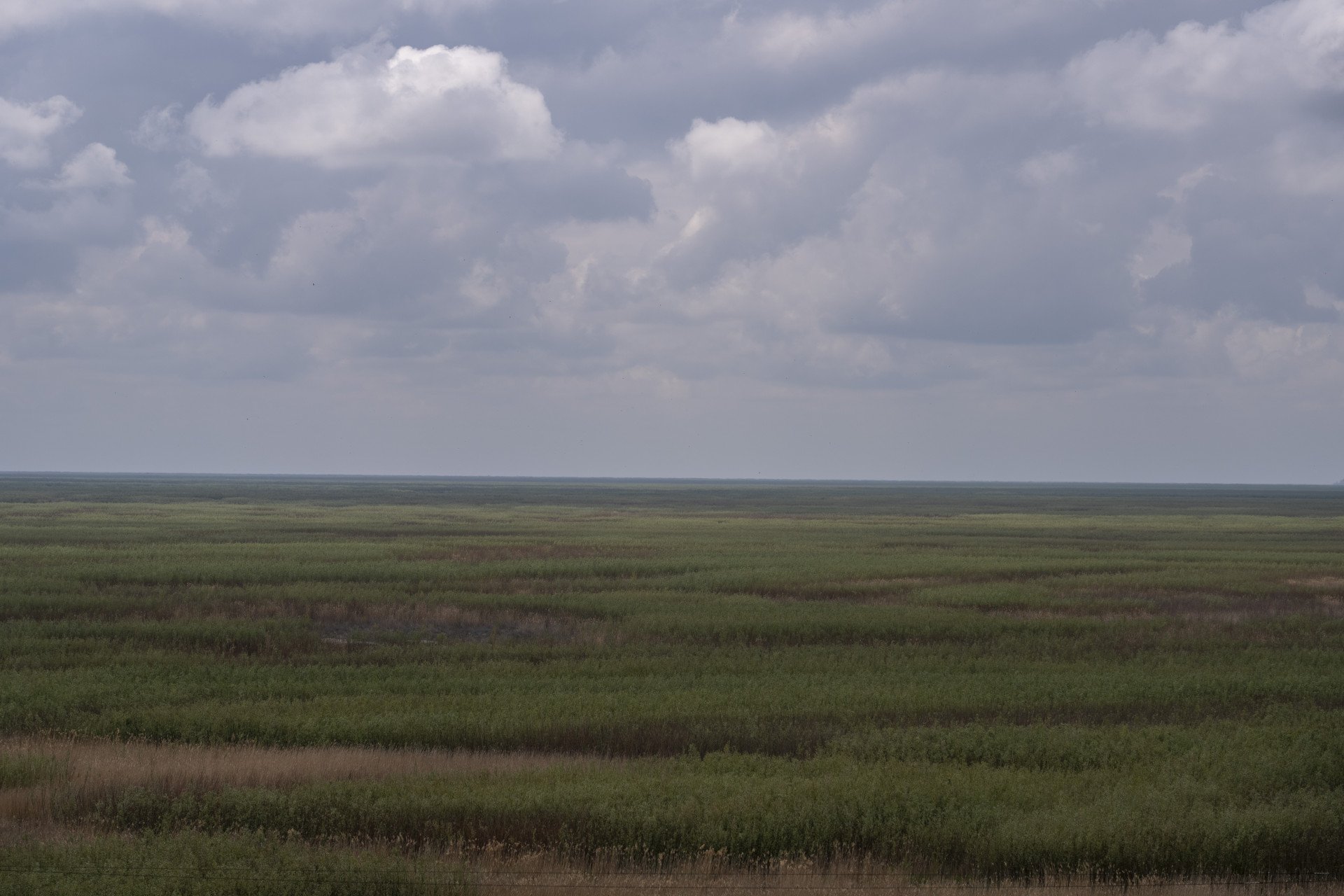
When Russian forces blew up the Kakhovka Dam on June 6, 2022, thousands of people and dozens of towns were affected. The vast reservoir that once stretched across southern Ukraine turned into a graveyard—fish rotting in the sun, the air thick with decay. Two years later, a sprawling willow forest now rises where water once shimmered.
What happened next feels like something out of S.T.A.L.K.E.R.—not just the war-scarred landscape, but the eerie beauty of nature creeping back in. Scientists feared that Europe’s worst man-made disaster since Chornobyl would leave behind dust storms or a sea of weeds. Instead, it gave rise to a massive green oasis—a unique wetland forest that is on track to become the largest in Europe.
The sea that became a forest
In the summer of 2023, water surged through the breached dam, flooding southern regions of Ukraine. Nearly 80 towns and villages in Kherson, Mykolaiv, and Zaporizhzhia regions were submerged under murky green currents from overflowing rivers and the Kakhovka Reservoir. At the same time, the reservoir itself dried up. But the explosion happened during the very week when willow seeds were dispersing.
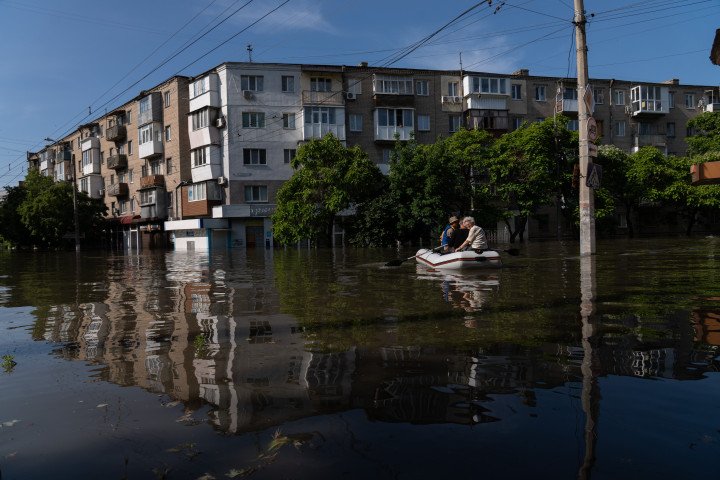
Rather than becoming a Martian wasteland, the Kakhovka Sea (as it is called by the locals) underwent several transformations—first into a swamp, then a desert, and finally a willow forest.
“Willows have always grown along the banks of the Kakhovka Reservoir,” told us Yakiv Didukh, head of the geobotany and ecology department at the M.G. Kholodny Institute of Botany of the National Academy of Sciences of Ukraine. “When the dam was blown up, the trees were in seed, and the seeds sprouted in abundance. Willow trees love water, and the exposed, moist reservoir bed provided ideal conditions. In the first year after the disaster, the trees were growing at a rate of 2.8 centimeters a day.”
Didukh has been studying the reservoir bed since the first week after Russia created the disaster.
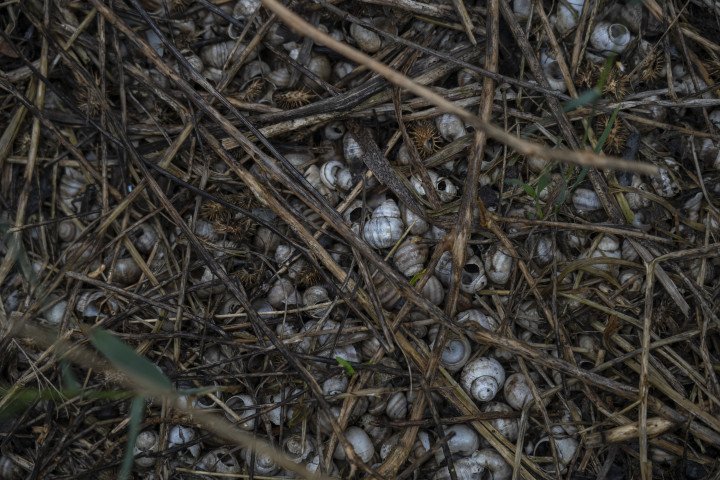
He witnessed the willow sprouts emerge from shells and silt, and eventually grow into full trees. On his most recent expedition this year, the willows of the Kakhovka forest were already towering five to six meters high, forming a canopy above him.
In a place Russia hoped to turn into a dead wasteland, scientists predict that in 15 years, a massive wetland forest will thrive—a forest likely to gain protected status.
“We are witnessing something truly unique—nature reclaiming what the war tried to take away,” says Didukh, who now conducts fieldwork wearing a helmet and bulletproof vest.
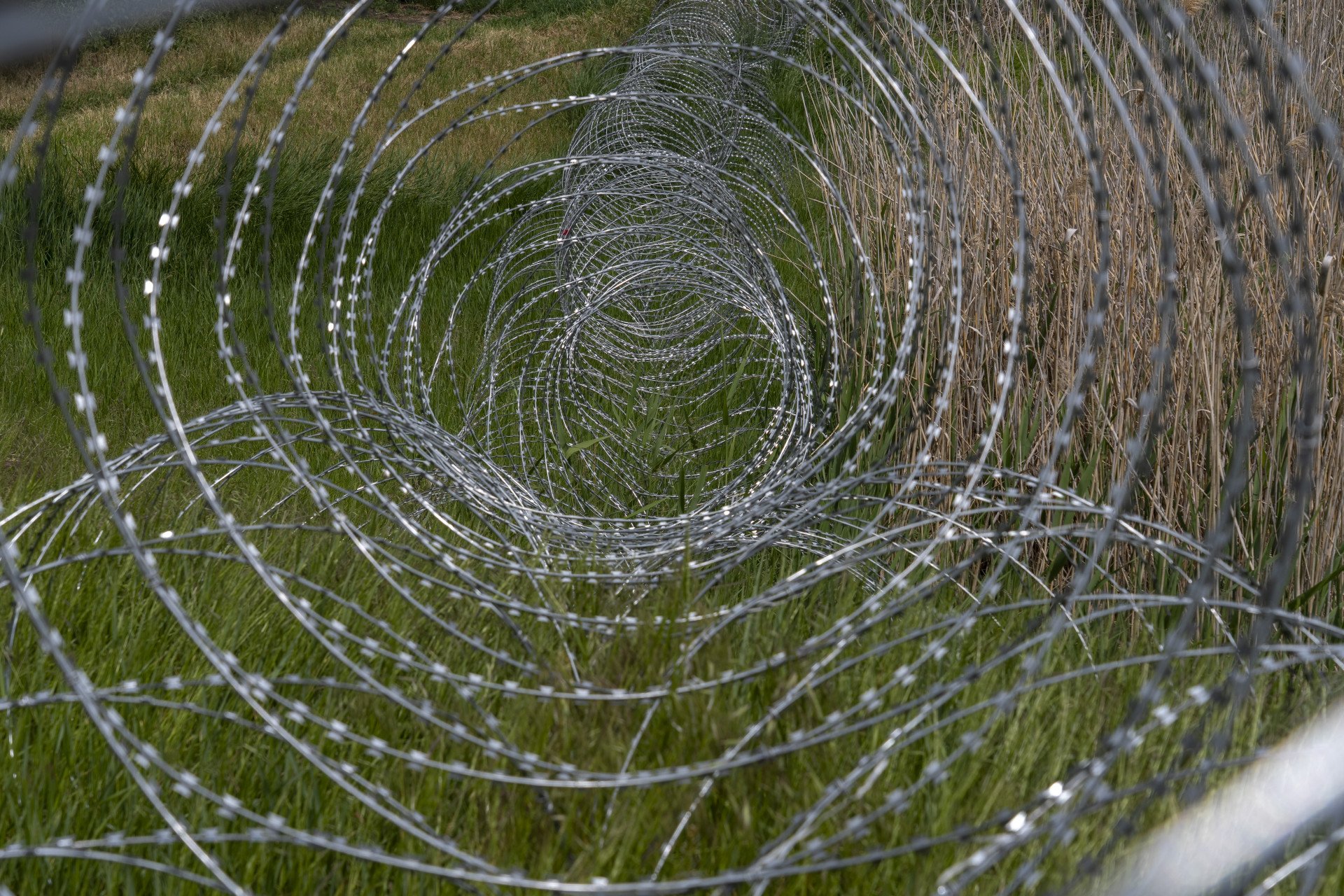
After the flood
The willow forest is most visible from the village of Malokaterynivka, a small fishing community in the Zaporizhzhia region perched on a bluff between the Kakhovka Reservoir and the Konka River. A railway line cuts through the village, once connecting Kakhovka with the Black Sea via Crimea. Before the war, the trip took just a few hours. Now, both the route and the sea are gone.
“The rain went on for days. It poured like a curtain, day and night,” says 65-year-old Liudmyla Volyk, gazing out from the high bank. “The reservoir was full, the Konka River overflowed, and the water reached our homes. There was so much water, we weren’t happy about it. We had no idea we’d be missing it within days. On the fourth day of rain, the Russians blew up the dam. The water started receding before our eyes. I remember running to my brother’s house on the riverbank, and by the evening of June 6, islands of dry land had already appeared in the middle of the sea.”
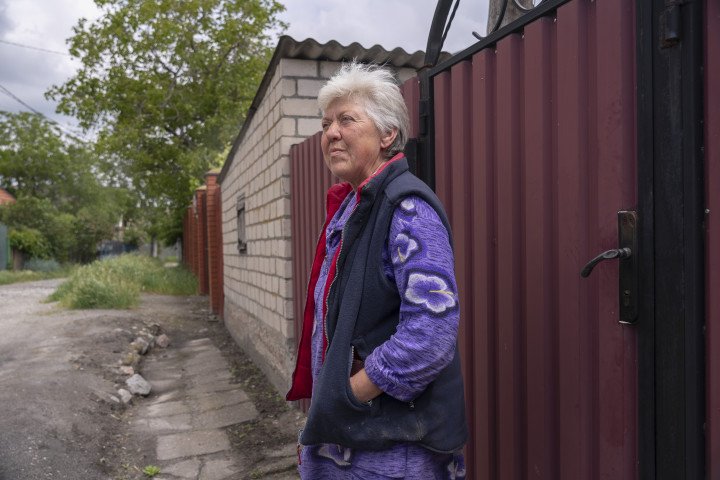
Now, instead of water, a sea of bright green stretches to the horizon—or rather, to the Russian positions on the occupied side of the Zaporizhzhia region.
Liudmyla was born and raised in Malokaterynivka and eventually became the village elder. She has watched war shatter the near-idyllic life of what locals fondly called their “fisherman’s Denmark.”
Before Russia’s full-scale invasion, over three thousand people lived in Malokaterynivka. Their lives revolved around the reservoir, which supported a fishery. Locals rented out homes to tourists. Almost every resident owned a boat for fishing and leisure. Now fewer than two thousand remain. The sea is gone, and the boats sit idle in yards, repurposed to collect rainwater.

“Fishermen only took weekends off during spawning season,” says Liudmyla. “The rest of the time, they were hauling in carp, crayfish, bream, and crucians by the kilo. Now the boats sit useless in the yards, the fishing nets hang on fences. We used to call this the Kakhovka Sea—just ‘the sea.’ Now, I don’t even know what to call it. The Kakhovka Forest? A sea of forest?”
The Kakhovka tragedy also wiped out the village’s supply of technical water used for irrigation. The fishery’s closure sent the local economy into decline. But for Malokaterynivka, lack of water and jobs isn’t the worst part.



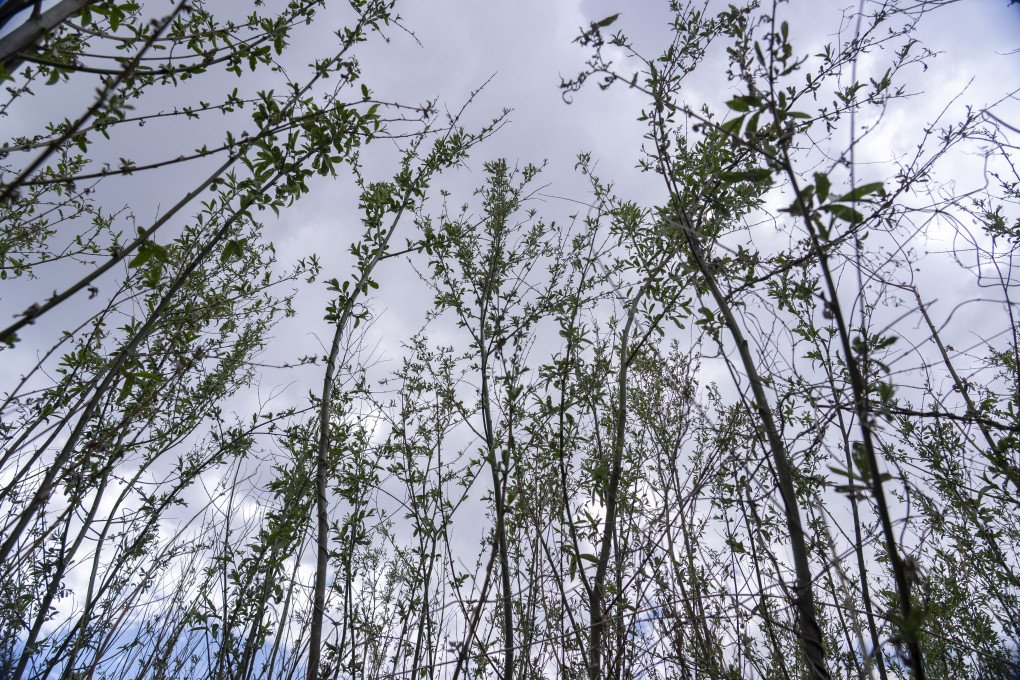
Almost every week, Russian attack drones, guided bombs, and Grad rockets strike from the direction of occupied Enerhodar, flying through the forest toward the village.
Liudmyla’s home was destroyed in a Russian glide bomb attack. But she doesn’t grieve the roof or walls—her real loss is the people.
“We’ve lost three adults and, sadly, one child,” she says. “When Russians shelled a kids’ café last summer, they injured a teenager. The boy died in my son’s arms. His last words were: ‘Volyk, I want to live,’” she says, breaking into tears.
Liudmyla’s 37-year-old son, Serhii Volyk, works as the local sheriff.

A forest behind barbed wire
As a community officer, Serhii should be handling legal matters and keeping the peace. Instead, he clears rubble, rescues residents, evacuates children, delivers bread, and makes sure civilians stay off the reservoir bed.
“The Russians shell us with everything they’ve got,” he says, checking a fence while wearing a light bulletproof vest with a “Police” patch. “Recently, I had to pull a woman from the rubble with my own hands. She wasn’t breathing by the time we reached her. Several houses burned down, along with the store and post office. Some of the shells hit the forest. There are explosives, unexploded ordnance, and who knows what else. It’s dangerous to go there.”
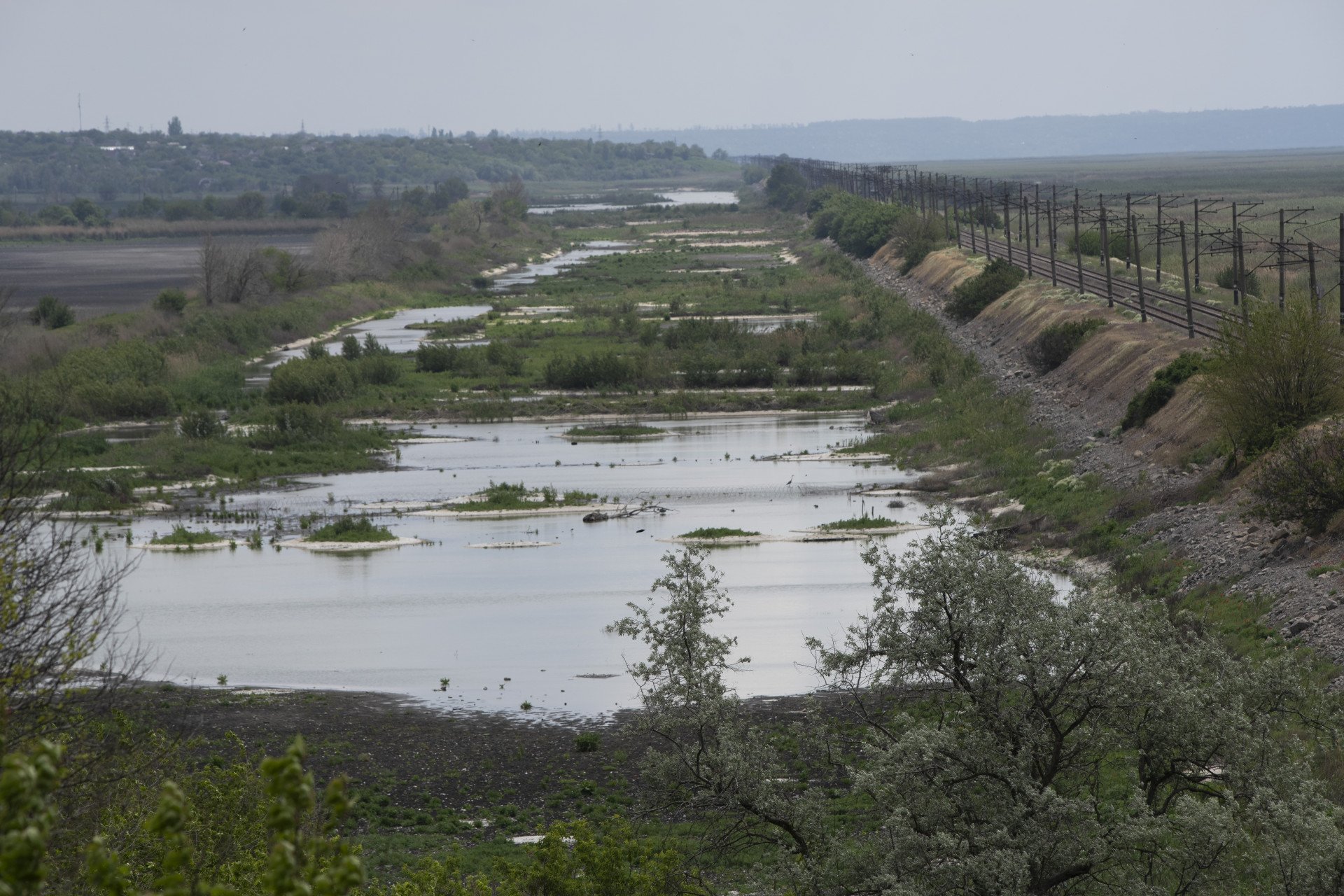
Barbed wire was recently installed along the reservoir’s edge. Now, red poppies and willow sprouts grow through the coils. But people can’t pass through. It’s a safety measure. Venture just a few meters into the willow forest and you could get lost—it’s that dense.
“Animals run through the forest now. Even wild cats, boars, and deer are showing up. But the main thing is to make sure those who are worse than animals don’t try to come at us through that forest,” the sheriff says, nodding toward the Russian-occupied side.
Ecologists, however, rule out the possibility of a Russian advance through the forest. The moist, sponge-like soil of the former reservoir bed could trap anyone who tries.
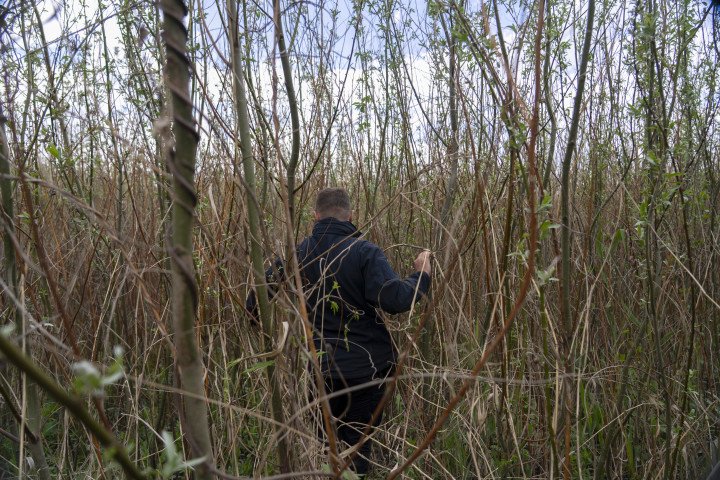
For now, the forest is a haven amidst the war for countless species of animals, birds, and plants.
Scientists and officials continue to debate whether to preserve the area as a protected natural zone after the war or refill the reservoir. But village elder Liudmyla has her own view:
“Whether it becomes a sea, a forest, or a nature reserve, people here in Malokaterynivka will be happy either way. As long as it’s our Ukrainian sea, our forest, or our reserve.”

-e57197e6c1f200c16b3b2cc1d45169d4.jpeg)
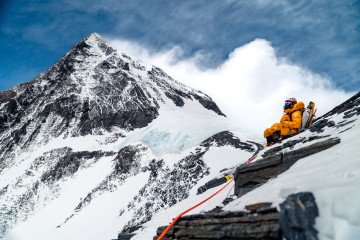

-b63fc610dd4af1b737643522d6baf184.jpg)

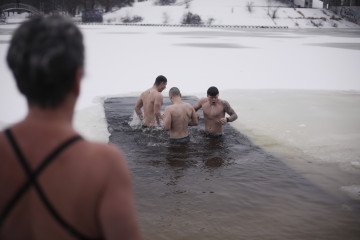
-554f0711f15a880af68b2550a739eee4.jpg)

-ba02b3bc86f0b624f99115809a6a34d0.jpg)